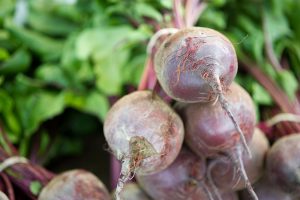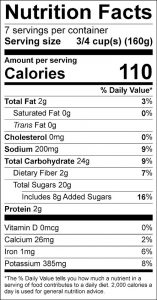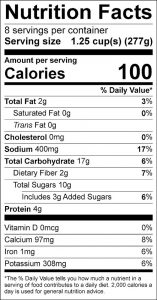Bulletin #4252, Vegetables and Fruits for Health: Beets and Beet Greens

Revised and updated by Associate Extension Professor Kathleen Savoie and Statewide Nutrition and Physical Activity Educator Kate Yerxa, University of Maine Cooperative Extension.
Originally developed by Extension Nutrition Specialist Nellie Hedstrom, University of Maine Cooperative Extension.
For information about UMaine Extension programs and resources, visit extension.umaine.edu.
Find more of our publications and books at extension.umaine.edu/publications/.
Fresh beet greens are one of the earliest spring-grown vegetables to arrive at Maine farmers markets come spring. The nutritious, flavorful green is also a welcome early addition from your garden. The small beets attached to the greens are sweet and add variety to the vegetables you serve.
Nutrition Information
Fresh beets are higher in nutritive value when compared with their canned counterparts. The roots (the part typically called beets) are low in calories—44 calories for a 3/4-cup serving—and high in vitamin C and folate. (Folate is the B vitamin known for its role in preventing birth defects in growing fetuses.) The greens are also high in vitamin C, with 30 percent of the recommended daily allowance (RDA) in a half cup of cooked greens. They are also high in vitamin A. If it is the folate you are after, stick with the roots, a serving of which supplies 17 percent of the RDA for this nutrient; beet greens only offer 2.5 percent.
Selection
Beets are available throughout the garden season. Here are a few things to look for when selecting fresh beets:
- Choose smaller beets over larger, tougher beets. Beets over 2 1/2 inches in diameter may be tough and have a woody core.
- Pass over any beets that are cracked, soft, bruised, or shriveled, or look very dry.
- If the beet greens are still attached to the root, they should be crisp-looking and not wilted or slimy.
- Avoid elongated beets with round, scaly areas around the top surface. These beets will be tough, fibrous, and strongly flavored.
Storage
After buying beets, you can refrigerate them in a perforated plastic bag, separated from the greens, for up to three weeks. Leave the beets unwashed when storing. When cutting the tops from beets, leave at least 1/2 inch of the stems and at least two inches of the tap root on the beat. If you cut closer to the beet, the color will bleed from the vegetable during cooking. Remember, greens will only last for a few days in the refrigerator: use them within two or three days.
Preparation
You can cook beets in any variety of ways, including boiling, baking, microwaving, or even pickling.
Beet greens: Enjoy them raw in salads, or boil them, or microwave them for 7 to 10 minutes. You can also sauté them in a bit of olive oil. Season to taste.
Beets: wash beets gently before cooking, but do not pare or trim them. Beets are best cooked whole with their peels intact. This preserves nutrients and prevents their color from leaking out and leaving the beets brown and unappetizing in appearance. Adding an acid while cooking, such as vinegar or lemon juice, will help preserve the intensity of the color.
Boiling beets takes from 20 to 45 minutes, depending on the age and size of the beets. Be sure that they are covered with water, in a covered pan. Beets can be microwaved in about 14 minutes. Use a half cup of water in a covered dish, rearranging the beets halfway through the cooking time. Leave them covered for 5 minutes after microwaving. Baking beets takes longer, between 45 minutes and 1 1/4 hours, but more nutrients are retained. Cooked beets should be tender all the way through.
Once cooked, run cold water over the beets to cool them. Peel the skin off while wearing gloves, unless you don’t mind having your hands stained with beet juice.
Harvard Beets
Serves 7
2 1/2 pounds medium beets (5 cups)
2/3 cup unsweetened orange juice
2 tablespoons apple cider vinegar
1 tablespoon margarine, melted
1/4 cup brown sugar, packed
1 tablespoon cornstarch
1/4 teaspoon salt
1/8 teaspoon pepper
Scrub beets lightly with a brush.
Cook beets, covered in water, with 1 inch of stem and tap root intact. Cover and simmer for 40 minutes or until tender. Drain, peel, and cut into 1/4-inch slices. Set aside.
Combine juice, vinegar, and margarine in a bowl. Combine sugar, cornstarch, salt, and pepper in a large saucepan. Gradually add juice mixture, stirring with a wire whisk until blended. Bring to a boil over medium heat, stirring constantly. Add beets, stirring gently to coat. Cook 4 minutes or until heated through. Serve warm.
Borscht Soup
Serves 8
1 tablespoon olive oil
2/3 cup onion, chopped
4 cups water
2 cups fresh beets, peeled and diced
2 cups potato, peeled and diced
1 1/2 tablespoons brown sugar
3/4 teaspoon dill seeds
1 teaspoon salt
1/4 teaspoon pepper
1 1/2 cups nonfat buttermilk
1/2 cup plain nonfat yogurt
Put oil in a large saucepan and cook onion over medium heat for 5 minutes or until tender. Add 4 cups water and the next 6 ingredients; stir well. Bring to a boil. Reduce heat, cover, and simmer for 1 hour or until beets are tender. Place about a third of the mixture in a blender; cover and process until smooth. Pour puree into a large bowl. Repeat procedure with remaining mixture. Stir in buttermilk. Cover and chill. To serve, ladle into individual soup bowls; top with yogurt.
Some content adapted with permission from University of Massachusetts Cooperative Extension.
Information in this publication is provided purely for educational purposes. No responsibility is assumed for any problems associated with the use of products or services mentioned. No endorsement of products or companies is intended, nor is criticism of unnamed products or companies implied.
© 1997, 2009
Call 800.287.0274 (in Maine), or 207.581.3188, for information on publications and program offerings from University of Maine Cooperative Extension, or visit extension.umaine.edu.
In complying with the letter and spirit of applicable laws and pursuing its own goals of diversity, the University of Maine System does not discriminate on the grounds of race, color, religion, sex, sexual orientation, transgender status, gender, gender identity or expression, ethnicity, national origin, citizenship status, familial status, ancestry, age, disability physical or mental, genetic information, or veterans or military status in employment, education, and all other programs and activities. The University provides reasonable accommodations to qualified individuals with disabilities upon request. The following person has been designated to handle inquiries regarding non-discrimination policies: Director of Equal Opportunity and Title IX Services, 5713 Chadbourne Hall, Room 412, University of Maine, Orono, ME 04469-5713, 207.581.1226, TTY 711 (Maine Relay System).



